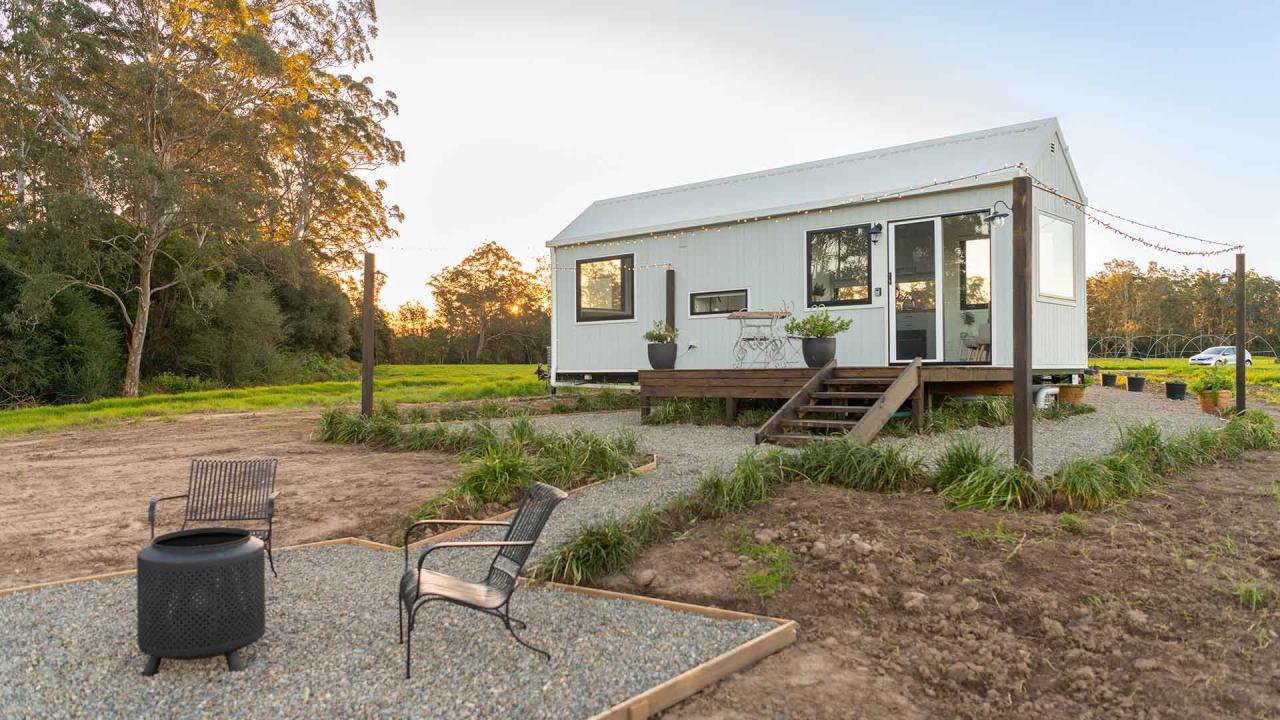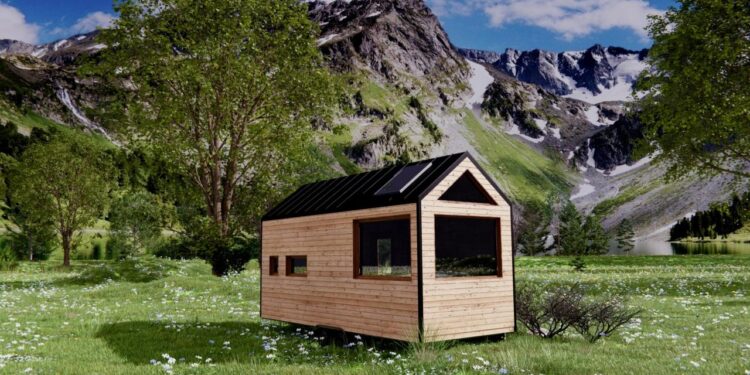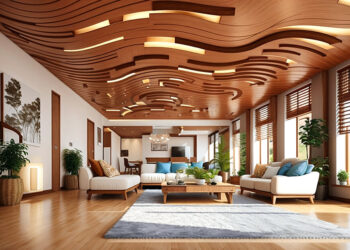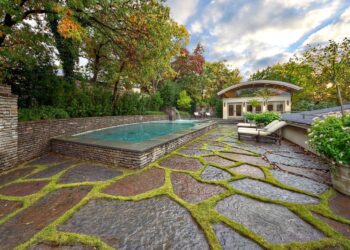The Genesis of a Movement

The roots of the modern tiny house movement can be traced back to various socio-economic and cultural shifts, gaining significant momentum in the early 21st century. It’s a response to pressing issues that many individuals and communities face.
A. Economic Pressures:
- Affordability Crisis: Soaring housing prices, especially in urban and suburban areas, make traditional homeownership unattainable for many. Tiny homes offer a significantly lower entry barrier.
- Reduced Debt: The smaller purchase price or construction cost means less reliance on large mortgages, leading to substantial debt reduction or avoidance. This translates to greater financial freedom.
- Lower Running Costs: Significantly reduced utility bills (electricity, water, heating/cooling), property taxes, and maintenance expenses make tiny living economically attractive long-term.
B. Environmental Consciousness:
- Smaller Footprint: Less material consumption during construction and drastically reduced energy usage during habitation contribute to a significantly smaller environmental impact. This aligns with the broader Sustainable Buildings Emerge trend.
- Resource Efficiency: Tiny homes are often designed with sustainability in mind, incorporating features like solar panels, rainwater harvesting, composting toilets, and efficient insulation.
- Reduced Waste: Encourages a more mindful approach to consumption, as there is less space for unnecessary possessions, contributing to a Minimalist Aesthetics Endure philosophy.
C. Desire for Simplicity and Freedom:
- Decluttering Life: Living in a small space necessitates a focus on essential possessions, promoting a minimalist lifestyle that many find liberating from consumerism.
- Mobility and Flexibility: Many tiny homes are built on trailers, offering the freedom to move and explore different locations, appealing to adventurers and those seeking nomadic lifestyles.
- Less Maintenance: Fewer rooms and less square footage mean less cleaning and upkeep, freeing up time and energy for hobbies, travel, or work.
- Focus on Experiences: With reduced financial burdens and less emphasis on material possessions, tiny home dwellers often prioritize experiences over things.
D. Reaction to Over-Consumption:
- Anti-Consumerism: The movement can be seen as a direct counter-response to the “bigger is better” mentality that dominated housing in previous decades, advocating for a more deliberate and conscious way of living.
- Mindful Living: Encourages individuals to be more intentional about their choices, from what they buy to how they use resources.
What Constitutes a Tiny Home?
While there’s no universally agreed-upon maximum size, tiny homes typically range from 100 to 400 square feet (approximately 9 to 37 square meters). This contrasts sharply with the average new single-family home, which can be ten times larger or more. The “tiny” definition extends beyond mere size to encompass a philosophy of deliberate design and efficient living.
A. Form Factors:
- Tiny Homes on Wheels (THOWs): The most recognizable type, built on a trailer frame, allowing for mobility. They are often classified as Recreational Vehicles (RVs) for legal purposes, which impacts zoning.
- Permanent Tiny Homes: Built on foundations, similar to traditional houses, but within the tiny footprint. These require traditional building permits and conform to local building codes.
- Container Homes: Utilizing repurposed shipping containers as the primary structural element, often customized with windows, doors, and insulation.
- Micro-Apartments/ADUs (Accessory Dwelling Units): While not always “tiny homes” in the purest sense, micro-apartments in urban centers or ADUs built in backyards share the principle of maximizing small spaces.
B. Design Principles:
- Multi-functional Spaces: Every square inch is utilized, with furniture often serving multiple purposes (e.g., a sofa that becomes a bed, stairs with integrated storage). This exemplifies Outdoor Living Expands by forcing creative interior solutions.
- Verticality: Maximizing vertical space with lofts, tall cabinetry, and Vertical Gardens Rise on walls to add greenery without taking up floor space.
- Smart Storage Solutions: Built-in shelving, hidden compartments, under-floor storage, and wall-mounted organizers are crucial for keeping clutter at bay.
- Abundant Natural Light: Large windows, skylights, and light-colored interiors maximize natural illumination, making small spaces feel larger and more airy.
- Outdoor Integration: Seamless connection to the outdoors via large doors, decks, or porches extends the living space, a key aspect of Experiential Architecture Blooms.
C. Core Elements:
- Compact Kitchens: Feature smaller appliances (mini-fridges, two-burner stoves), efficient sinks, and smart storage for cooking essentials.
- Efficient Bathrooms: Often include composting toilets, small showers, and clever storage for toiletries.
- Sleeping Lofts: Many tiny homes utilize lofted sleeping areas to maximize floor space below for living or working.
- Sustainable Systems: Rainwater harvesting, greywater recycling, solar panels, and highly efficient insulation are common features, contributing to Net-Zero Buildings Built aspirations.
How Tiny Homes Are Reshaping Society
The ripple effect of the tiny home movement extends far beyond individual households, influencing communities, economies, and design philosophies.
A. Redefining Affordability and Homeownership:
- Accessibility: Opening up the dream of homeownership to a broader demographic, including young professionals, retirees, and those with limited incomes.
- Reduced Financial Stress: Liberating individuals from the burden of large mortgages, student loans, or credit card debt, leading to greater financial stability and peace of mind.
- Alternative Housing Solutions: Providing a viable alternative to traditional housing in areas with housing shortages or high costs.
B. Driving Sustainable Living and Environmental Awareness:
- Eco-Conscious Choices: Encouraging a more environmentally conscious lifestyle, from reduced energy consumption to careful waste management.
- Green Building Practices: Promoting the use of sustainable materials, energy-efficient appliances, and off-grid living solutions, directly influencing Sustainable Buildings Emerge movements.
- Reduced Carbon Footprint: The cumulative effect of many tiny homes contributes to a lower overall societal carbon footprint.
C. Fostering Community and Connection:
- Tiny House Villages: The rise of planned communities specifically designed for tiny homes, fostering close-knit, supportive environments.
- Shared Resources: In many tiny home communities, residents share resources like laundry facilities, common spaces, or gardens, promoting interaction.
- Increased Outdoor Time: Less indoor space often translates to more time spent outdoors and engaging with neighbors.
D. Inspiring Innovative Design and Architecture:
- Maximizing Small Spaces: Pushing architects and designers to innovate in space utilization, multi-functional furniture, and creative storage solutions, influencing even larger home designs.
- Prefabricated and Modular Construction: The tiny home movement has accelerated interest and advancements in Modular Construction Accelerates, making building processes faster, more efficient, and more affordable.
- Material Innovation Drives Design: Demand for lightweight, durable, and sustainable materials that perform well in compact structures.
- Adaptive Reuse Transforms Structures: Creative repurposing of existing small structures or unexpected spaces.
E. Influencing Urban Planning and Policy:
- Zoning Law Changes: Communities are re-evaluating restrictive zoning laws that historically made tiny homes difficult to permit, leading to greater acceptance of ADUs and tiny home communities.
- Homelessness Solutions: Some cities are exploring tiny home villages as a viable, humane solution for addressing homelessness, offering quick-to-deploy, dignified housing options.
- Disaster Relief: Tiny homes can provide rapid, self-contained shelter in areas affected by natural disasters.
Challenges and Considerations in Tiny Living

While the allure of tiny homes is strong, embracing this lifestyle comes with its own set of challenges and important considerations.
A. Legal and Zoning Hurdles:
- Classification: Tiny homes on wheels are often classified as RVs, meaning they cannot be permanently lived in within many jurisdictions or parked in typical residential areas.
- Building Codes: Permanent tiny homes must meet local building codes, which can be challenging for very small footprints or unconventional designs.
- Permitting: Obtaining permits for plumbing, electrical, and septic systems can be complex for tiny structures, especially those off-grid.
- Foundation vs. Wheels: The legal status (and thus where you can place it) often hinges on whether it has a permanent foundation.
B. Social and Psychological Adjustments:
- Decluttering Challenge: The rigorous process of paring down possessions can be emotionally taxing.
- Living with Less: Adapting to minimal storage and limited personal space requires a significant lifestyle adjustment.
- Relationships: Living in close quarters can strain relationships if occupants are not well-suited to the demands of small-space living.
- Privacy Concerns: Limited personal space within the home can impact privacy.
C. Practicalities and Logistics:
- Utilities: Connecting to utilities (water, electricity, sewage) can be complex, especially for off-grid solutions.
- Mail and Addresses: For mobile tiny homes, establishing a permanent mailing address can be an issue.
- Parking/Location: Finding legal and safe places to park THOWs long-term can be a significant challenge in many areas.
- Resale Value: The resale market for tiny homes can be more niche compared to traditional homes, potentially impacting long-term investment.
D. Weather and Climate Adaptation:
- Insulation: Proper insulation is critical for maintaining comfortable temperatures in extreme climates, whether hot and humid (like in Indonesia) or cold.
- Ventilation: Good ventilation is essential to prevent moisture buildup and mold in small, tightly sealed spaces, particularly relevant in tropical climates.
- Durability: Materials must be chosen carefully to withstand local weather conditions and wear and tear in a compact space.
Trends and Innovations
The tiny home movement is not static; it’s continuously evolving, integrating new technologies and design philosophies to address modern living needs.
A. Smart Home Integration:
- Smart Homes Redefine Living: Tiny homes are ideal candidates for smart home technology, maximizing efficiency and comfort in a small footprint. This includes automated lighting, climate control, smart appliances, and security systems.
- Space Optimization through Tech: Automated transforming furniture (e.g., beds that fold into walls, tables that emerge from floors) controlled by smart systems.
B. Sustainable and Off-Grid Solutions:
- Advanced Solar and Battery Systems: More efficient and compact solar panels combined with improved battery storage are making off-grid living more viable and reliable.
- Water Management Innovation: Sophisticated rainwater harvesting, greywater recycling, and composting toilets that are more user-friendly and aesthetically integrated.
- Passive House Principles: Designing tiny homes to maximize natural heating, cooling, and ventilation, reducing energy consumption to near zero. This drives Net-Zero Buildings Built.
C. Modular and Prefabricated Excellence:
- Factory-Built Precision: The demand for tiny homes is accelerating the adoption of Modular Construction Accelerates and prefabrication, allowing for higher quality control, faster build times, and reduced waste.
- Customization in Production: Manufacturers are offering more customizable modular tiny homes, allowing buyers to select layouts, finishes, and features.
D. Community-Centric Development:
- Co-Living and Micro-Villages: The development of purpose-built tiny home communities that offer shared amenities (community gardens, workshops, common rooms) and foster strong social bonds. This promotes Community-Centric Spaces Grow.
- Integrated Urban Solutions: Tiny homes and ADUs becoming a more accepted part of urban planning to address housing density and affordability.
E. Experiential and Wellness Design:
- Biophilic Design Gains Traction: Integrating natural elements, views, and materials to enhance well-being and connection to nature within tiny spaces.
- Wellness Design Prioritized: Focus on indoor air quality, natural light, and quiet spaces to create healthy living environments.
- Immersive Outdoor Spaces: Designing the tiny home’s immediate outdoor area (deck, garden) as an extension of the living space, leveraging Outdoor Living Expands.
F. Digital Fabrication and AI Design:
- AI Shapes New Forms: AI tools are increasingly used in the design process to optimize layouts, materials, and structural efficiency for tiny homes.
- Digital Fabrication Advances: Computer-controlled cutting (CNC) and 3D printing are allowing for more complex, customized, and efficient construction of tiny home components.
Conclusion
The Tiny Homes Big Impact narrative is a powerful one, reflecting a global shift towards more intentional, sustainable, and financially accessible living. What began as a fringe movement has blossomed into a mainstream phenomenon, challenging conventional ideas of scale and proving that quality of life isn’t measured in square footage.
For individuals, tiny homes offer a pathway to financial freedom, a simplified existence, and a stronger connection to the environment. For communities, they represent an innovative solution to housing affordability, sustainable development, and a renewed emphasis on community-centric spaces. As Modular Construction Accelerates and Smart Homes Redefine Living within these compact footprints, the tiny home movement will continue to drive innovation in architecture and design. It’s a compelling vision for the future, demonstrating that by embracing less, we can truly gain more: more freedom, more connection, and a significantly larger, more positive impact on our planet. The future of living is not necessarily bigger, but undeniably smarter, more sustainable, and deeply impactful.












